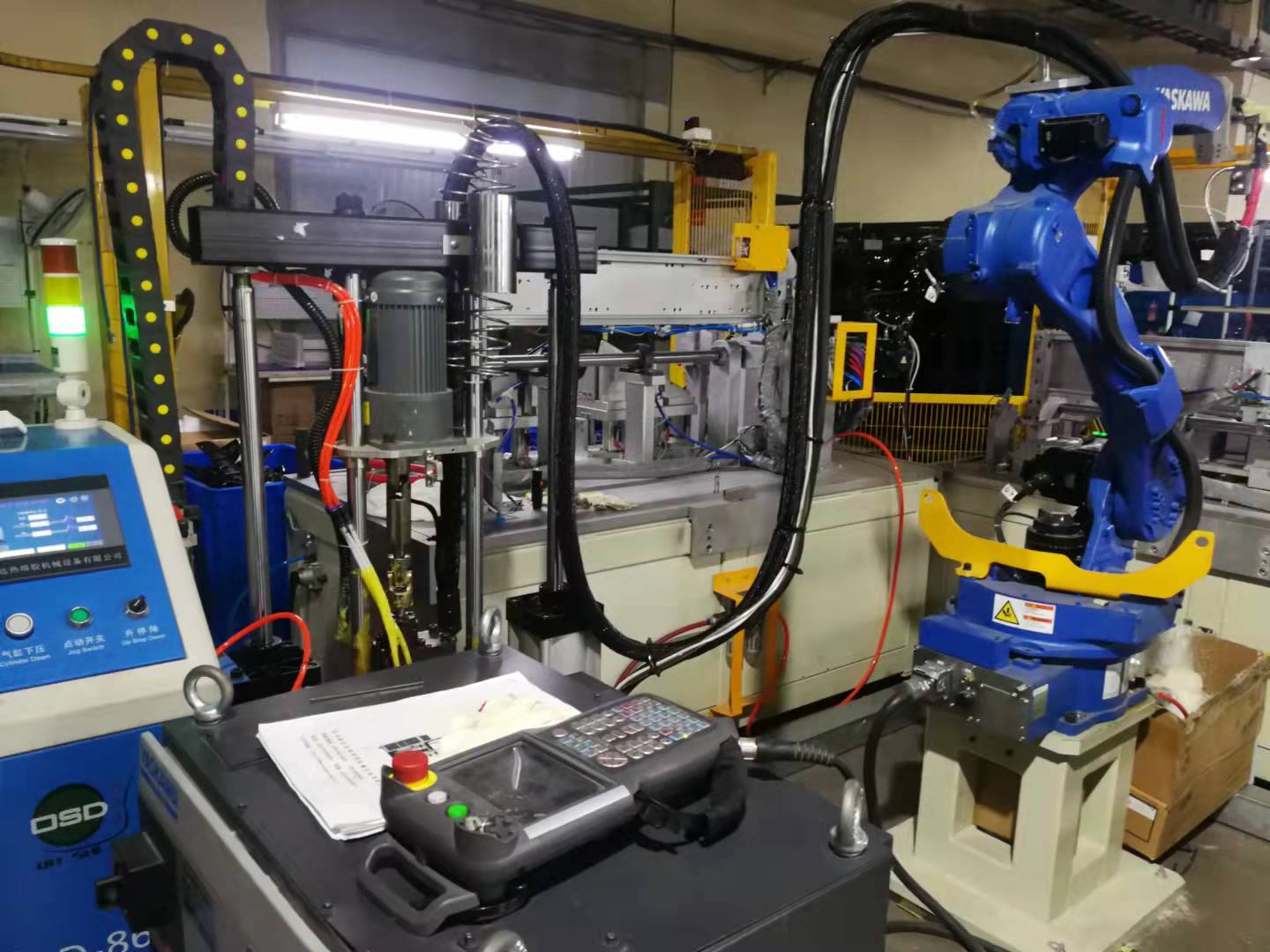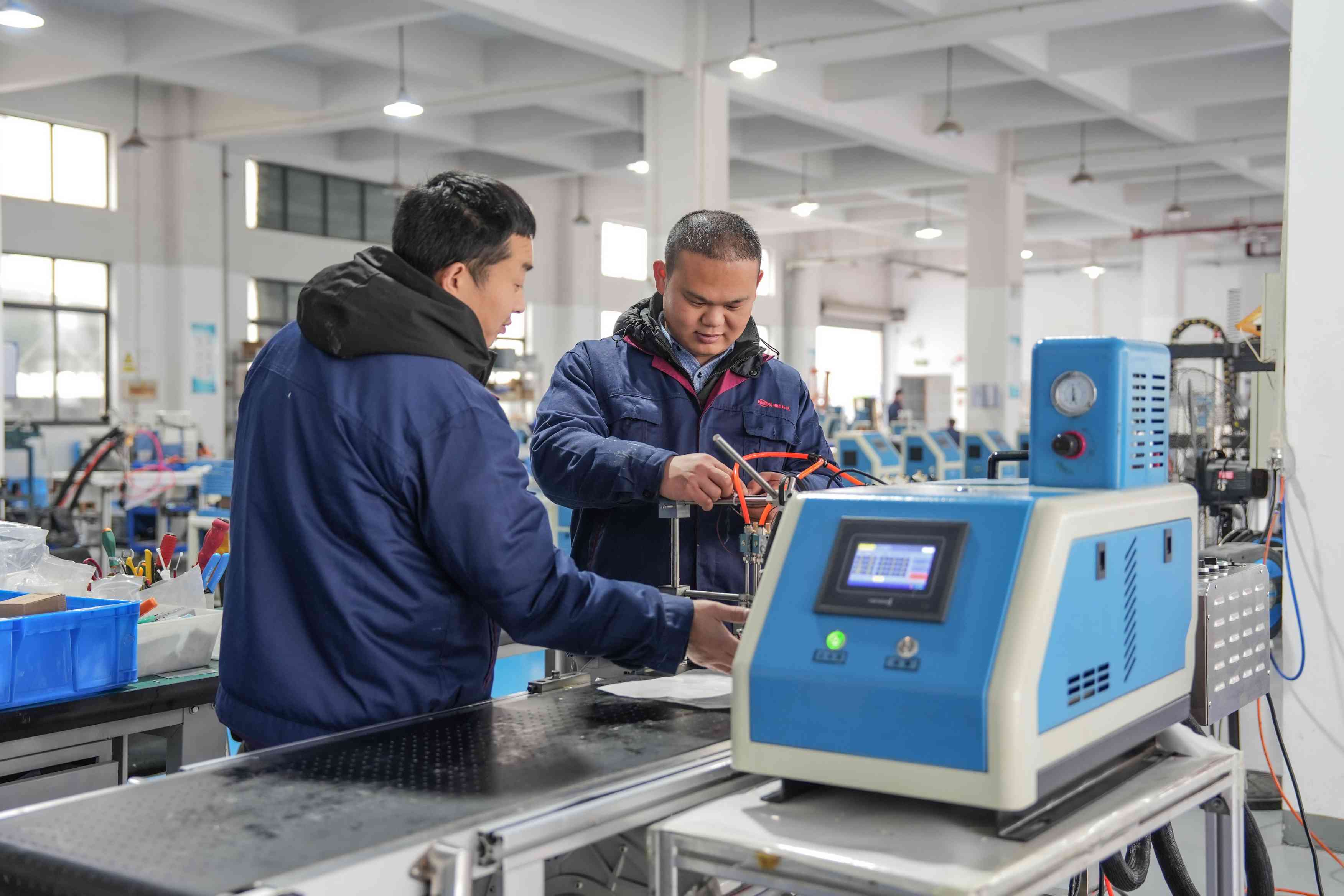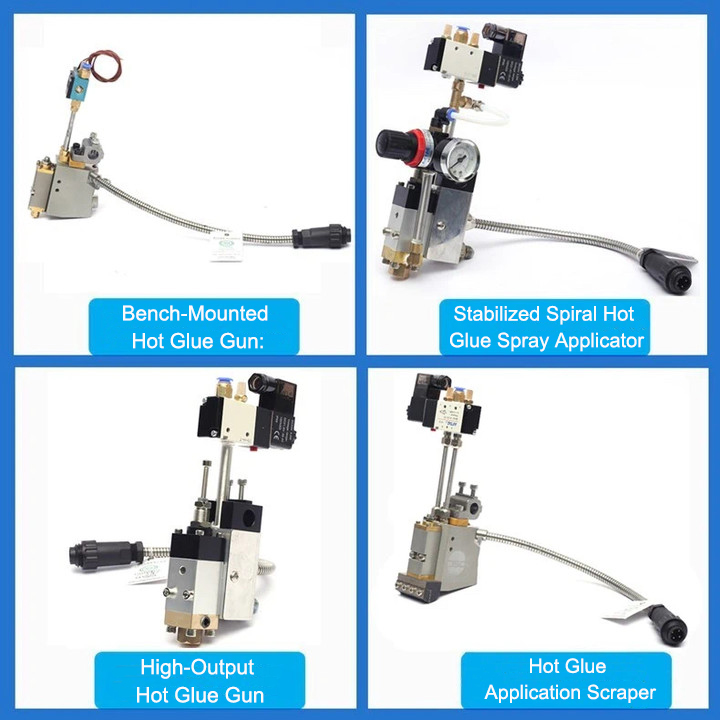Suzhou Oushida Hot Melt Machinery Equipment Co., Ltd.
18 years of experience in R&D and production of hot melt adhesive spraying equipment and automation equipment
18 years of experience in R&D and production of hot melt adhesive spraying equipment and automation equipment



Are you still troubled by frequent glue gun blockages, squeegees, or unstable glue flow?
"It's clogged again!" "Why does the glue flow fluctuate?" In crafts, home repairs, and other applications, glue guns are supposed to improve efficiency. However, frequent blockages and erratic glue flow not only waste glue and delay projects, but also ruin the creative experience. If you're experiencing this problem, the following will analyze the root causes and provide practical solutions to restore your glue gun's stability.
1. Glue gun problem? Find the root cause first.
Glue gun problems are often related to gun quality, glue selection, operation method, and routine maintenance:
Low-quality glue guns: Uneven heating (overheating causes glue solidification and blockage, while overcooling causes incomplete melting); poor push rod seal (air and glue leakage, and residual glue solidification exacerbates blockage).
· Incorrect glue selection: The glue gun is not compatible with the glue (e.g., using a low-power gun with high-melting-point glue, which will not fully melt and block the opening); using expired glue (deteriorated ingredients, impurities, and residue).
Improper operation: Using the gun before it is heated enough (poor adhesive flow, forcing the gun to push glue can cause buildup and blockage); unstable ejector speed (instantaneous glue output); not cleaning the ejector port after use (cured residual glue can cause blockage the next time).
Inadequate maintenance: Not cleaning glue buildup on the gun's inner wall (impairing glue flow and increasing ejector wear); damaged power cord (unstable power supply can lead to uneven heating).
2. Targeted Solutions: Restoring Glue Gun Stability
(1) Choose the Right Glue Gun and Glue to Prevent Problems at the Source
· Glue Gun: Choose a reputable one. Pay attention to heating power (60W-100W for home use, high power for industrial use) and temperature control accuracy to ensure uniform heating and a good seal on the push rod.
· Glue: Choose according to the type of glue gun (hot melt guns use hot melt glue sticks, cold glue guns use cold glue). Choose high-purity glue that's not expired. For special materials, choose specialized glue.
(2) Standardize Operations to Reduce Errors
Before Use: Place the glue gun securely, check the power cord, and then power on. Heat the gun according to the instructions for 3-5 minutes (for hot-melt guns, check for glue overflow; for cold-melt guns, test fluidity).
During Use: Push the push rod at a steady speed, releasing it when paused. Before using again, drain a small amount of glue to ensure smooth flow.
After Use: After turning off the hot-melt gun, wipe the glue nozzle while it's still hot. Remove any stubborn residue with a fine needle after it cools. For cold-melt guns, cap the bottle and clean the nozzle.
(3) Proper Maintenance to Extend Lifespan
· Regular Cleaning: After every 5-10 uses, drain any excess glue from a hot melt gun after heating and wipe the inside with a cleaning stick (or cardboard tube). For cold melt guns, periodically remove the glue bottle and wipe the inside.
Proper Storage: Store in a dry, well-ventilated area away from direct sunlight and moisture. Keep the power cord away from any kinks or squeezing. Contact professional after-sales service for any malfunctions, and do not disassemble the device yourself.
Conclusion
While clogged glue guns and unstable glue flow are common, they can be easily resolved by choosing the right glue, operating the gun correctly, and maintaining proper maintenance. From now on, your glue gun will become your go-to tool, allowing you to efficiently complete handicrafts and repairs, and you'll enjoy hands-on work.
